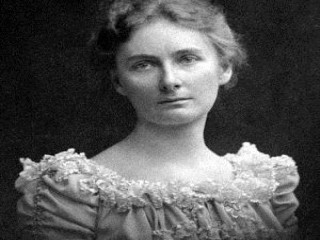
Florence Bascom biography
Date of birth : 1862-07-14
Date of death : 1945-06-18
Birthplace : Pennsylvania, New Jersey, U.S.
Nationality : American
Category : Science and Technology
Last modified : 2011-05-03
Credited as : Scientist, geomorphology,
Florence Bascom was a pioneer in expanding career opportunities for women in the sciences. She was the first woman to receive a Ph.D. in geology from an American university, the first female to receive a Ph.D. of any kind from the Johns Hopkins University (1893), and the first woman to join the United States Geological Survey (1896). Bascom was a widely known and respected geologist whose work mapping the crystalline rock formations in Pennsylvania, New Jersey, and Maryland became the basis for many later studies of the area.
Bascom was born on July 14, 1862, in Williamstown, Massachusetts. This town was the home of prestigious Williams College, where her father, Dr. John Bascom was professor of oratory and rhetoric. Both Professor Bascom and his wife Emma (Curtiss) Bascom actively supported women's rights and had strong interests in the natural sciences. In 1874, John Bascom accepted the presidency of the University of Wisconsin, and his family left Williamstown. Florence Bascom was less than fifteen years old when she graduated from high school in Madison, Wisconsin. She then obtained, in 1882, two degrees—Bachelor of Arts and Bachelor of Letters degrees—from the University of Wisconsin. Two years later she earned a Bachelor of Science degree, and in 1887 completed a Master's degree in geology.
Roland D. Irving and Charles R. Van Hise were Bascom's mentors at Wisconsin. Both were eminent geologists, and it was under their tutelage that Bascom learned the techniques of an emerging field of geology—the analysis of thin, translucent rock sections using microscopes and polarized light. These methods had only recently been developed in Germany, and there existed no textbook from which to learn them. Instead, Bascom studied directly from the original research papers, written in German.
As president of the University of Wisconsin, John Bascom was instrumental in instituting coeducation. Conversely, his daughter faced immense obstacles in applying for a doctoral program. She hoped to study with George H. Williams, a professor at the Johns Hopkins University renowned for his use of microscopic geological techniques. The Johns Hopkins, however, had not yet allowed a woman to officially complete a degree program. Bascom applied for admission to the Geology Department in September of 1890. Seven months later, the executive committee concluded that Bascom could attend without being officially enrolled as a student, and charged only for her laboratory fees. During classes, Bascom's seat was located in the corner of the classroom—and hidden behind a screen. Undaunted, Bascom applied formally to the doctoral program in 1892. She was accepted secretly. By intrepidly completing difficult and often solitary field work, Bascom produced a dissertation that a writer in American Mineralogist later described as "brilliant." For this, Bascom earned in 1893 the first Ph.D. in geology ever awarded to a woman by an American university.
After receiving her Ph.D., Bascom taught for two years at Ohio State University. In 1895, she accepted an invitation to join the faculty of Bryn Mawr College in Pennsylvania as a Reader in Geology. She was hired to teach a single course, and the college had no plans to create a new department of geology. Because of her success, however, within a few years the single course grew into an entire major. Bascom was granted a full professorship in 1906. Bascom's specialty was petrology, the study of how present-day rocks were formed. Much of her research focused on the mid-Atlantic Piedmont region, and she wrote approximately 40 publications.
Bascom retired from Bryn Mawr in 1928. She had been editor of The American Geologist, a Fellow of the Geological Society of America (1894), and vice-president of that organization (1930). Through her research and teaching, Bascom left an important scientific legacy. In 1937, a total of eleven women were Fellows of the Geological Society of America; eight of them were Bryn Mawr College graduates. Never married, Bascom lived after retirement in her farmhouse atop Hoosac Mountain in northwestern Massachusetts. For several winters, she traveled to Washington, D.C., to complete work for the United States Geological Survey. Despite being shy, concise, and serious-minded, Bascom maintained close ties to her academic family of students and colleagues. She died of cerebral hemorrhage in Williams-town, Massachusetts, on June 18, 1945, and was buried next to her family in a small Williams College cemetery. According to former student Eleanora Bliss Knopf writing in American Mineralogist, Bascom's death left "to her colleagues, her students, and her friends the inspiring memory of a scholarly and brilliant mind combined with a forceful and vigorous personality."
















